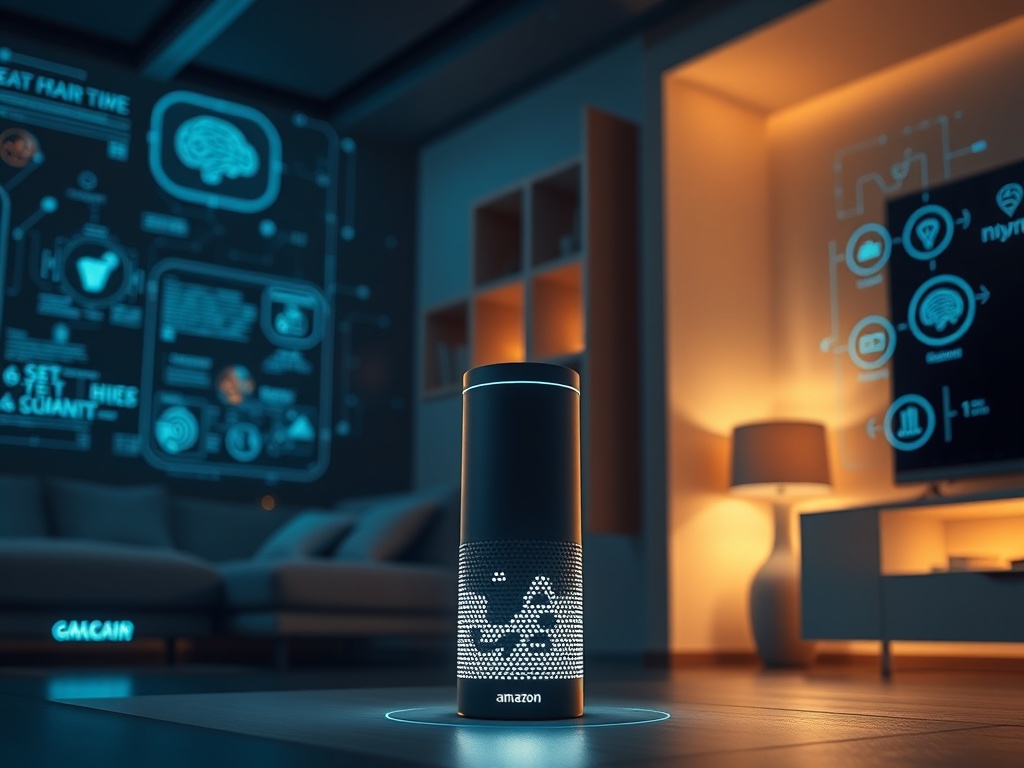BitcoinWorld

Alexa+ AI Assistant: A Promising Yet Challenging Smart Home Upgrade
Just as blockchain technology is reshaping financial landscapes, artificial intelligence is revolutionizing how we interact with our homes. The promise of an AI-powered assistant that anticipates needs and streamlines daily tasks has long been a futuristic dream. Now, Amazon is stepping up its game with Alexa+, a significantly upgraded version of its popular digital assistant, powered by Generative AI. After a personal home tragedy presented a unique opportunity to rebuild a smart home from scratch, the question arose: can Alexa+ truly be the central hub for a modern connected household? This multi-part series aims to provide real-world insights into its capabilities, moving beyond company demos to assess its practical utility for consumers like you.
The Dawn of Alexa+: A New Era for AI-Powered Assistant
For years, Amazon’s Alexa offered a glimpse into a Star Trek-like future, allowing users to control smart devices with voice commands. However, in the wake of the ChatGPT era, the original Alexa felt increasingly limited. Modern AI chatbots have set a new standard, capable of complex reasoning, creative generation, and even performing online tasks as agentic AI. Recognizing this gap, Amazon announced a complete makeover in February 2025, introducing Alexa+. This upgraded AI-powered assistant began rolling out in March and is now available to millions, leveraging models from Anthropic and Amazon Nova, among others. Amazon teased that this improved Alexa could do far more than set timers; it could understand user preferences, summarize Ring camera footage, and even book reservations or order groceries, aiming to bring agentic AI directly into the home.
Setting Up Your Smart Home AI: First Steps with Alexa+
Our journey with Alexa+ began with setting up a brand-new Amazon Echo Spot device. The setup process itself was notably smoother than previous generations, now requiring only a QR code scan in the Alexa app, which automatically connected to Wi-Fi. Upon accepting the free upgrade to Alexa+ (with the option to downgrade), a brief onboarding video explained how the assistant would learn over time. Linking a Google account for calendar and email access was straightforward, though it led to an odd blank page initially. The subsequent steps involved selecting and granting permissions for integrated services like OpenTable, Ticketmaster, Uber, and Thumbtack. While tedious, this granular control over data sharing was a welcome feature, ensuring users understand what information each service accesses. Fodor’s travel planning was already integrated, with Uber Eats, Grubhub, and Vagaro slated for future additions.
However, the Alexa app itself remains a significant hurdle. Despite numerous updates, its user interface feels cluttered yet somehow sparse, lacking intuitive navigation. Basic functions, like linking a preferred music service, are buried deep within the interface, requiring users to navigate through a ‘hamburger menu’ and ‘Music & More’ section rather than standard settings. An attempt to set Audible as the default for audiobooks resulted in a frustrating ‘skill no longer exists’ error, highlighting persistent app design flaws that detract from the overall user experience.
Can Alexa+ Truly Manage Your Family’s Schedule?
For busy households, a shared family calendar is indispensable. Amazon suggests that Alexa+ can streamline this, summarizing your day, adding events, and identifying conflicts. In practice, the AI-powered assistant showed promise in managing schedules. Inquiring about daily events and following up with subsequent questions felt more natural, as there was no need to repeat the ‘Alexa’ wake word. However, adding new meetings was often interrupted by Alexa asking for the meeting title mid-sentence, an annoying but minor hiccup. While asking ‘What’s on my calendar today?’ worked well, Alexa’s self-knowledge about where to find voice chat history in the app proved incorrect, pointing to a need for better internal consistency.
Alexa, Remember This: Testing the AI-Powered Assistant’s Memory
One of Alexa+‘s touted features is its ability to store information on your behalf. A test involving remembering a frequent flier number, however, revealed significant shortcomings. Despite multiple attempts, Alexa struggled to correctly register and recall the number. It either interrupted the user before the number could be spoken, or it ‘saved’ it without actually doing so. When finally prompted to recall the number, Alexa read it as a long numeral (e.g., ‘six hundred fifty-two million…’) instead of digit by digit, rendering the information practically useless. This basic memory function, crucial for a truly helpful AI-powered assistant, clearly needs refinement.
Unlocking Information: Alexa+ and Your Digital Inbox
Alexa+ now claims to understand documents uploaded to the app or forwarded via email. To test this, an email from a child’s school, often dense with information, was forwarded. The Generative AI successfully summarized the welcome-back letter, identifying key dates and general information. When asked for specific details, it accurately stated that no grade-specific information was present. This capability is genuinely useful for quickly sifting through lengthy communications. However, when asked to add important dates to the calendar, Alexa initially misheard and began listing existing calendar events. Upon correction, it added three dates it deemed ‘important’ from the email. Crucially, the email contained 12 important dates, all formatted similarly. Relying solely on Alexa would have meant missing nine critical school events, highlighting a lack of thoroughness in identifying all relevant information.
Saving Money with Generative AI: Price Tracking Capabilities
Another compelling promise of Alexa+ is its ability to track prices on Amazon and notify users when items go on sale. Testing this with a skincare serum and a handbag revealed mixed results. Alexa successfully set up deal trackers for both items. However, when immediately asked for the current price of the serum, Alexa went silent or simply reiterated that a deal tracker had been set up, failing to provide the immediate information requested. For the handbag, Alexa correctly identified that a blue option wasn’t showing in search results (implying out of stock), but failed to mention other available colors like red, only stating black was available. Furthermore, the blue option was listed as ‘temporarily out of stock’ on the website, not entirely absent, indicating a potential disconnect in information retrieval. While the concept of a Generative AI-powered shopping assistant is appealing, its current execution leaves much to be desired in terms of accuracy and responsiveness.
Initial Verdict: A Promising But Beta Alexa+ Experience
These initial tests suggest that Alexa+, despite its ambitious Generative AI foundation, is very much a beta product. While it shows flashes of brilliance and genuine utility, particularly in summarizing emails and understanding conversational follow-ups, it is also prone to significant errors, omissions, and frustrating lags. Basic functions like remembering numbers or providing immediate product information often fail, and the underlying Alexa app’s poor design further hinders the user experience. For Smart home AI to truly revolutionize daily life, the assistant needs to be consistently reliable and thorough, especially when navigating the web and performing actions on your behalf. The potential is immense, but the current reality indicates a journey still in its early, challenging stages. The next installment of this series will delve deeper into its agentic AI features and smart home integrations to see if Alexa+ can live up to its full promise.
To learn more about the latest AI trends, explore our article on key developments shaping AI features.
This post Alexa+ AI Assistant: A Promising Yet Challenging Smart Home Upgrade first appeared on BitcoinWorld and is written by Editorial Team





